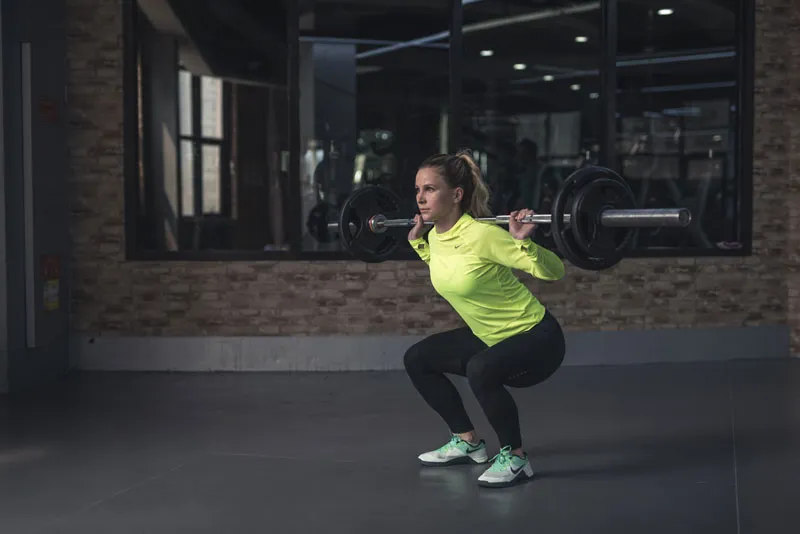The squat is one of the best and most rewarding exercises that we can do in the gym. However, when we’re dealing with knee pain, sometimes squatting can seem like the worst thing to do! Luckily, there are many ways that we can modify the squat to allow you to continue to train the movement even while dealing with knee pain! Below, we will cover our top four tips that we give to our clients to help them solve this issue!
#1. Change your stance/technique
When we are squatting, our stance and style of squatting will have an effect on how much our knees are stressed during the movements. In most cases, when we squat with a close stance and emphasize our knees traveling past our toes, this will increase the amount of stress placed on the knees (note that this is NOT a bad thing, as squatting in this manner is a perfectly fine and safe way to squat). If we are dealing with knee pain, widening our stance a little and limiting forward knee travel can help reduce some of the stress on the knee joint, and therefore make squatting more comfortable.
If you use this tip and change your squatting stance/technique to work around knee pain, you will want to slowly work back to your preferred squatting stance/technique as your knee pain calms down.
#2. Slow down the movement
Using slower tempos for your squats can be a great way to help reduce any knee pain you may be having while squatting. Tempo is simply the speed with which you perform certain parts of the movement, and is generally written out in a three or four digit sequence (X-Y-Z or W-X-Y-Z). For example, a tempo of 3-0-3-0 would mean you lower the weight for 3 seconds (the eccentric phase), have no pause in the bottom of the movement, lift the weight for 3 seconds (the concentric phase), and have no pause at the top of the movement.
Using slower tempos while squatting will still allow you to train hard, but it will limit the amount of weight on the bar while doing so. Also, slower tempo work like this can stop you from “catching the bounce” out of the bottom of the squat, which can be irritating for some types of knee pain.
Once your knee pain starts to calm down from doing slower tempo squats, the goal is to slowly progress the tempo back to your normal speed for squatting. So if you start using a 3-0-3-0 tempo, you can progress to a 3-0-1-0 tempo, and then to a 2-0-1-0 tempo, and finally to your preferred squatting tempo/speed.
#3. Limit depth
Oftentimes when our patients come to us with knee pain while squatting, they will say that the very bottom position of the squat is where their knee feels the worst. If this is the case, we can temporarily limit squat depth to avoid that aggravating position.
We generally recommend staying just shy of the painful part of the range of motion, and you can do this by performing box squats, pin squats, or just stopping before you reach the bottom of a regular squat.
As your knee feels better, slowly increase the depth that you’re squatting to until you’re back to your full depth.
#4. Get professional help
If you’ve been trying to solve your own knee pain with squatting for weeks or months and not seeing any improvement, it might be time to seek out the help of a qualified professional. Doing this can often save you time, money, and frustration.
However, make sure you work with a healthcare provider who can actually provide you with a plan to not only help you solve your knee pain, but continue to do the activities you love in the meantime. Don’t settle for the tired advice of “well, just stop squatting.”



